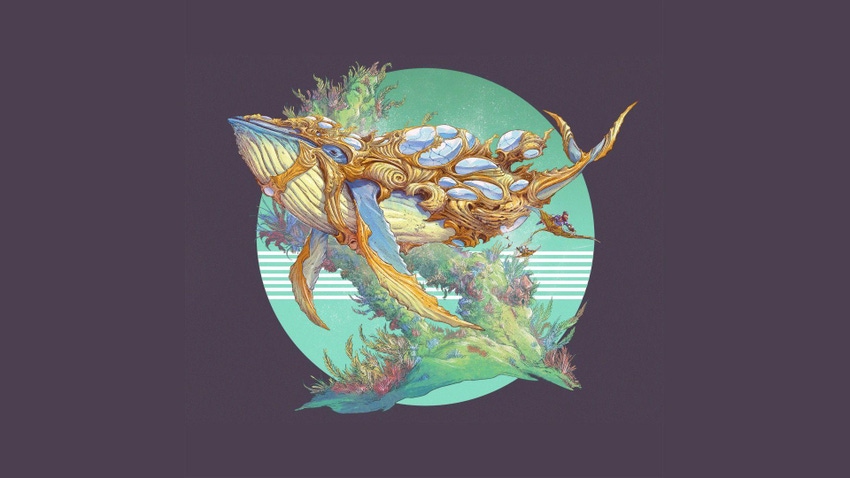
Featured Blog | This community-written post highlights the best of what the game industry has to offer. Read more like it on the Game Developer Blogs.
Clean Slate vs. Reactive Design
Creativity comes in two flavors – Clean Slate and Reactive. In this blog post, Warren Spector discusses both and admits he’s an adherent of the latter rather than the former.

I’ve always had a weird habit of getting obsessed with games I’d never think about making.
I was thinking about that recently and that led to some thoughts about different kinds of creativity and how my kind of creativity may be different than some of you reading this. See, mine starts with frustration about…something, anything, but mostly about game styles that I think could be improved if developers weren’t so committed to convention. (You know what I’m talking about — games that seem driven by “Do what we’ve always done because it works…and we can always add prettier pictures!” That kind of thinking just frustrates the heck out of me.) And that led to the realization that frustration gets me thinking, which (paradoxically) keeps me playing and (ultimately) gets me reacting. Next thing I know, I’m waking up at 4 in the morning, scribbling furiously on a notepad (okay, on my phone, actually) and before you know it, there’s a game I want to make.
Those 4 a.m. creative bursts (which often drive teams crazy — “Oh, no, Warren didn’t sleep last night… we’re all in trouble!”)… these reactions to frustration stand in stark contrast with what I’ve started thinking of as “clean slate” creativity. And, while some of you will no doubt argue that everything is a reaction to something (nothing new under the sun…), I do think there’s a difference between my approach and that of other folks. I say that because I’ve been lucky enough to work with plenty of “clean slate” guys — Allen Varney…Greg Costikyan…David “Zeb” Cook in tabletop games… Richard Garriott, Chris Roberts and Doug Church in electronic games… (And anyone want to quibble with me throwing Will Wright’s name into the “clean slate” bucket? We haven’t worked together, but I think he’s a safe addition to the group!)
These guys routinely come to the table with a vision of something entirely new, a game unlike anything anyone’s ever seen. Half the time they sound nuts when they describe what they want to do, even to me. The other half of the time, I can’t wait to play their games and immediately start looking for ways I can help to enable and empower them — when you run up against something Totally New, you kind of have to help realize the idea, don’t you?
In contrast, while I have plenty of ideas, I don’t often find myself with all-new ideas like that — as I said, I’m more a reactive kind of guy. I play a game or read a book or watch a movie; I get frustrated at how lame some feature or element is or how conventional or how easily it could be improved. I see ways to add an element here or bring in an element from another kind of game. My pitch slides always (ALWAYS) include a couple of slides along the lines of “Take the best of games like X, throw in a bit of what makes Deus Ex or Ultima great and you’ve got Warren’s New Game Idea.”
In other words, I look for ways to take things that frustrate me and fix them.
Sometimes, my frustration is with a game’s fiction, sometimes it’s with gameplay, sometimes it’s with an underutilized feature, sometimes it’s with an entire genre I think needs a kick in the rear. But, like the princess who can’t sleep because of the pea under her mattress, I can’t rest when I see something dumb in a game.
For example, as much as I love fantasy, and loved the world of Ultima, I couldn’t shake the feeling back in 1989 that fantasy was limiting us–commercially and creatively–and a more realistic, historical approach would help us tell cooler stories while reaching a larger, more diverse audience. “Why the heck don’t you use that great Ultima VI engine for something more broadly appealing, Richard?” I thought. The result was Martian Dreams — an Ultima-style historical science fiction adventure set in the Victorian era. (Okay, so I was wrong about reaching a larger audience with a non-fantasy Ultima title, but the spark that started the project was definitely frustration, not a desire to create a clean slate design. And I still occasionally – very occasionally! - get fanmail about it.)
A couple of years later, Ultima VII came out — a perfectly fine game but one that didn’t seem “epic enough” to me. In retrospect, that’s clearly absurd! It’s one of the best-loved of the Ultima series. I’m not saying my frustration is always justified! From a technical and graphics perspective it was groundbreaking, but the player experience didn’t seem as much of a step forward from Ultima VI as previous Ultimas had been from those that came before. Out of that frustration came Serpent Isle. (There was also the fact that Britannia was totally Richard Garriott’s world and anyone else trying to explore interesting ideas there had to face the inevitability of those dreaded words, “That would never happen in Britannia” or “Iolo would never do that!” Serpent Isle was born of frustration with that, too — I told the team we were going to create our own world, within the Ultima universe, so Richard could never say that stuff to us!)
Wings of Glory is a game of which I am inordinately proud, even if no one on the planet remembers it. That was sparked by a plane ride I took with Chris Roberts while he was working on Strike Commander. Here was his team of supergeniuses, creating the most amazing flight sim engine to date — best looking models, best looking terrain, a 3D cockpit you could actually look around to check your surroundings — and he was going to make a jet fighter game?! As I understood it at the time, jets don’t really dogfight. They fight from a distance, guaranteeing you’d be too far from Strike Commander’s beautiful 3D models to see them… flying too high to marvel at the incredibly detailed terrain… relying on radar to spot far-off enemies, ensuring you’d never have any reason to look around the 3D cockpit. I was frustrated. From that moment, I had to do a WWI flight sim, so you could get up close and personal with beautiful slow-moving planes, fly low to the ground and marvel at the terrain, swivel around the cockpit straining to catch a glimpse of an enemy before he got the drop on you.
Deus Ex was a response to Thief. I remember telling some members of the team that I just wasn’t good enough at sneaking to get through a guard encounter and they should just let me bash the guy. I lost that battle (and the way Thief turned out, I was clearly in the wrong for that game — Thief rocked). However, that lost battle led me to a place where all I could think was, “I’ll show those guys. I’ll make a game where you can sneak, fight or talk your way past any problem.” The next four years were just details — most of them conceived and definitely implemented by a wonder team. The point is, Deus Ex was born out of frustration with Thief.
A few years after Deus Ex shipped I was working with John Woo on a game/movie concept called Ninja Gold. On that one, I was driven by frustration on two levels: First, the Hollywood/Game collaboration just never seemed to work right and, second, ninjas are always treated so stupidly, in such a juvenile manner. I saw an opportunity to address both of those problems. Obviously, that project didn’t happen, but frustration was part of that, too. (Okay, I’m a huge John Woo geek, which didn’t hurt!)
Whatever the frustration that drives my creative urges, it’s always screaming frustration of some kind that drives me. Everything I do is a response to something, a dialogue with someone or something (even if the other party doesn’t know a thing about it!). For me, art requires something to push against. I need an “I’ll show them!” moment before I can muster the energy to devote three years of my life to something. As my lovely wife Caroline will gladly inform you, I go out of my way to find things to get worked up about, things to get mad about, things I think are stupid in games — things to react to.
This all leaves one big question, of course — how do I reconcile the OtherSide core value of “Innovation” with the reactive – maybe even editorial - approach to design discussed here?
My answer has a couple of parts. First, the way in which you react can (okay, for me it’s a must) include at least one thing no one’s ever seen before. Every game, no matter how small or big a budget you have, how inexperienced or burned out the team may be or how constraining the license is... every game should throw at least one thing at players they haven’t seen before. In other words, your reaction can and should include one curveball to seem, and truly be, innovative.
If you take that next crazy step and adopt my personal “kitchen sink” approach to design—there isn’t a minimalist bone in my body, to the chagrin of my teams... If you throw a bunch of new ideas in with a bunch of old ones, your starting point doesn’t really much matter.
Clean slate? Reaction?... Who cares? In the same way complex behaviors can emerge in a game or simulation from the interaction of simple rules, it doesn’t take too many new ideas mixed in with the old ones to result in something new, unexpected and wonderful.
If you buy that idea, there’s no contradiction between innovation and reaction at all. What matters is the end product, what’s on the screen, what happens when the player puts their hands on the keyboard or controller, not where you started. So, with that out of the way, let me address the second dangly bit from my comments above — what comes after the frustration? Once you’ve decided to react and have the barebones outline of an idea, what next?
Way back in 2004 - sheesh, was it THAT long ago?! Back then, I participated in the very first GDC Game Design Challenge coordinated by Eric Zimmerman (a pretty blank slate guy himself!). It was me, Raph Koster and Will Wright (nothing intimidating about THAT lineup!) and our challenge was to design a love story game. Frankly, I was so overwhelmed by the limitations of our medium, I wimped out. I couldn’t come up with a thing.
At the time, I thought what Raph pitched was pretty cool. He conceived a game that was about characters in love. But he didn't actually try to make the player feel whatever it is that love feels like...Will was just a freakin’ super genius whose concept was sort of a multiplayer cross between a shooter and a soap opera that should have gone into development instantly! His idea was based on the idea that people in peril often experience heightened emotions and fall in love easily. I STILL want to play that game. Anyway, I spent weeks thinking about how I’d make a love-sim, how I’d make a player truly feel love, even down to getting the same chemicals flowing through their bodies that would flow if they fell in love in the real world. (Read Helen Fisher like I did and you'll know what I mean.)
I came up with nothing.
So I gave a meta-talk and discussed the thought process I go through when I first start thinking about a game idea and why I was stumped by the love story idea. I talked about some questions I asked myself to determine if that idea was worth pursuing, or even possible. (Frankly, I ask these questions of any idea my team or I start thinking about.) Here were my love story questions:
What are we trying to do? What’s the core idea? Okay, a love story. Check.
What’s the potential? Why do this game over all the others we could do? Well, if you pulled off a love story, you'd have done something really cool! Sometimes that's enough.
What are the development challenges? Really hard stuff is fine—impossible or unfundable? Not so good... A love story? Let's talk about development challenges, shall we?
Has anyone done this before? If so, what can we learn from them? If not, what does that tell us? This was a solid "not." The fact that it still hasn't happened should tell you everything you need to know.
How well-suited to games is the idea? There are some things we’re just not good at and shouldn’t even attempt. A love story, for example!
What’s the player fantasy and does that lead to good player goals? If the fantasy and the goals aren’t there, it’s a bad idea. I'd argue that the fantasy of falling in love is a great one. Just one I had - and have - no idea how to deliver on.
What does the player do? What are the “verbs” of the game? I had - and have - no freakin' idea.
Clearly, I couldn't answer most of those questions, and where I could, the answers kept on coming up negative. When that happens, move on, I say, before the idea occupies any more of your brain cells. Certainly move on before the idea makes it into even concept development. If the love story answers had been positive - if there were good reasons to make the game, the development challenges weren’t too bad, the idea was well-suited to the medium (i.e., NOT a love story game!), I could have come up with something that didn't relegate me to the bottom of the Game Design Challenge heap. Heck I would have moved on to concepting such a game and the real fun would have begun. I mean, a love story game? How cool would THAT be?
Anyway, let me sum it up. For me, the scenario goes like this: After frustration comes reaction; after reaction comes questioning; after questioning comes concepting; after that, all hell breaks loose (and if you’ve ever made a game, you know exactly what I’m talking about...).
That's it, for now. In closing, let me turn this over to you folks and end with a question:
What game types/styles/categories bug you, frustrate you, and make you want to tear your hair out — which genres, in other words, do you think are ready for reaction and reinvention? (You’re welcome to cite specific games, but bear in mind that that kind of thing can lose you friends in this crazy, close-knit business!)
Read more about:
Featured BlogsAbout the Author(s)
You May Also Like













